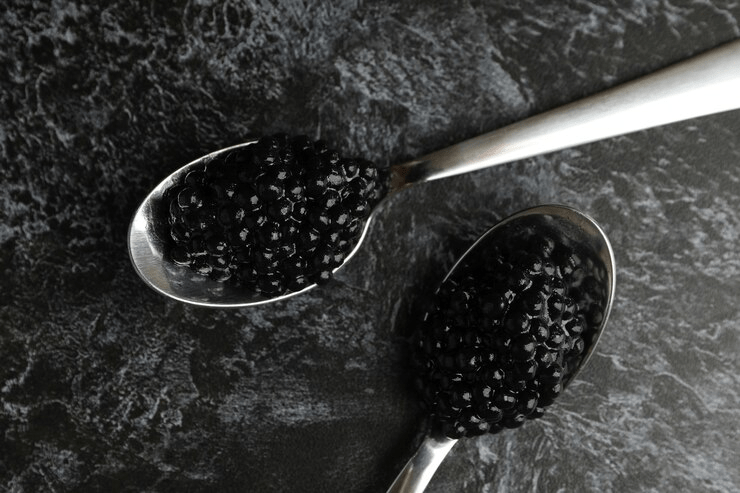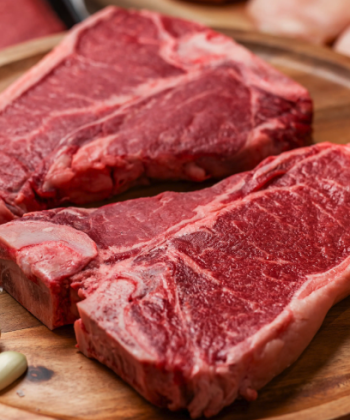Caviar, the delicacy of the elite, often evokes images of luxury and opulence. Yet, its journey from water to plate is a fascinating tale of history, meticulous processes, and a rich variety of types. This article delves into where caviar comes from, the methods of harvesting, the types available, and how to choose the best caviar for your palate here: https://sterlingcaviar.com/blogs/blog/where-does-caviar-come-from.

A Brief History of Caviar
Caviar’s history is as rich as its taste. The word “caviar” is believed to have originated from the Turkish word “khavyar,” which dates back to the 12th century. Historically, caviar was a delicacy reserved for royalty and the wealthy. In Russia, by the 13th century, it was a favored delicacy among the nobility. The Iranian Caspian Sea sturgeon and Russian sturgeon were the prime sources, establishing the region as the epicenter of caviar production.
By the 19th century, caviar had crossed into Western Europe and America, becoming a luxury item on high-end restaurant menus. The early 20th century saw a significant rise in the demand for caviar, leading to overfishing and the near extinction of wild sturgeon. This spurred efforts to regulate and sustainably manage caviar production, eventually giving rise to aquaculture.
How Is Caviar Harvested?
Harvesting caviar is a precise art that combines traditional techniques with modern innovations. There are two primary methods: the classic method and the humane method.
Traditional Harvesting Technique
The classic method of caviar harvesting has been practiced for centuries. This involves catching the sturgeon, typically during the breeding season when their roe is most abundant. Fishermen use large nets to capture the fish, which are then transported to processing facilities.
Once at the facility, the fish are cleaned, and their roe is carefully extracted. The roe is then rinsed to remove impurities, salted to enhance flavor and preservation, and finally, packed for distribution. This traditional method, while effective, often results in the death of the sturgeon.
Modern Ethical Harvesting Technique
In response to concerns about sustainability and animal welfare, the humane method of caviar harvesting has gained popularity. This technique allows for the extraction of roe without harming the fish, enabling repeated harvests from the same sturgeon.
1. Preparation
In humane caviar harvesting, sturgeons are raised in controlled aquaculture environments. When the fish are ready to spawn, they are gently massaged to relax them and prepare them for the roe extraction process.
2. Removal
The roe is then extracted through a process called “stripping,” where gentle pressure is applied to the fish’s abdomen to release the eggs. This method ensures the fish remain unharmed and can continue to produce roe in future spawning seasons. The extracted roe is then treated and processed similarly to the classic method, ensuring high-quality caviar with a more sustainable approach.

Exploring the Variety: Different Types of Caviar
Caviar comes in a remarkable variety, each with its unique flavor profile, texture, and color. The differences in caviar can be attributed to the type of fish, geographical origin, and the specific type of caviar produced.
1. Varieties Based on Fish Species
Sturgeon is the primary source of caviar, with several species contributing to the diversity available in the market.
- Beluga Caviar: Known for its large, delicate eggs and buttery flavor, Beluga caviar is considered the pinnacle of luxury. This rare and expensive caviar comes from the Beluga sturgeon found in the Caspian Sea.
- Osetra Caviar: Harvested from the Osetra sturgeon, this caviar ranges in color from golden to dark brown. Its flavor is rich and nutty, with a firm texture.
- Sevruga Caviar: Sourced from the Sevruga sturgeon, this caviar is smaller in size but boasts a strong, pronounced flavor. It’s often more affordable than Beluga and Osetra caviar.
- Sterlet Caviar: Once reserved for royalty, Sterlet caviar is smaller and less common, known for its distinctive taste.
- Kaluga Caviar: Sometimes referred to as “River Beluga,” Kaluga caviar has large, firm eggs with a mild, buttery flavor.
2. Geographic Origins of Caviar
The geographic origin of caviar also plays a crucial role in its characteristics.
- Caspian Sea: The Caspian Sea is historically the most famous source of caviar, particularly from Iran and Russia. The unique conditions of the Caspian Sea contribute to the distinctive flavors of its caviar.
- Black Sea: Another traditional source, the Black Sea provides caviar with a unique taste profile, particularly from sturgeon species like the Russian Sturgeon.
- North America: The rise of aquaculture has led to high-quality caviar production in the United States and Canada, particularly from species like the White Sturgeon.
- European Farms: Countries like France, Italy, and Spain have developed thriving caviar farms, producing high-quality caviar that competes on the global market.
3. Types of Caviar Based on Processing
The way caviar is processed further differentiates its types.
- Malossol: This Russian term means “little salt” and refers to caviar that has been lightly salted, preserving the delicate flavor of the roe.
- Pressed Caviar: A spreadable, paste-like caviar made from damaged or overripe eggs. It has a concentrated, intense flavor.
- Salted Caviar (Payusnaya): Heavily salted caviar that is less perishable and has a stronger taste. It is often used in cooking rather than served as a delicacy.
- Fresh Caviar: Also known as non-pasteurized caviar, this is the highest quality and must be consumed quickly after harvest.
The Ultimate Caviar Buying Guide: Selecting the Perfect Caviar
Choosing the right caviar can be daunting given the myriad options available. Here are some tips to help you make an informed decision.
1. Know Your Preferences: Decide whether you prefer a mild, buttery flavor or a strong, briny taste. This will help narrow down the type of caviar to choose.
2. Check the Source: Opt for caviar from reputable sources. Look for information about the farming practices and sustainability measures taken by the producer.
3. Understand the Label: Terms like “Malossol” indicate lightly salted caviar, while “Pressed” or “Salted” caviar have different textures and flavor profiles.
4. Consider the Color and Size: The color and size of the eggs can affect the flavor and texture. For example, Beluga caviar has large, light gray eggs, while Sevruga caviar has smaller, darker eggs.
5. Taste Before You Buy: If possible, taste the caviar before purchasing. Many high-end stores and caviar boutiques offer tasting sessions.
6. Check for Freshness: Fresh caviar should have a clean, briny smell and a smooth, firm texture. Avoid caviar that smells fishy or has a mushy consistency.
Conclusion
Caviar, with its rich history and luxurious reputation, remains a coveted delicacy around the world. Understanding where it comes from, how it is harvested, and the different types available can enhance your appreciation for this gourmet treat. Whether you’re a seasoned caviar aficionado or a curious newcomer, selecting the right caviar involves considering your taste preferences, the quality of the product, and the sustainability practices of the producer. With this knowledge, you can confidently explore the exquisite world of caviar and enjoy its unique flavors and textures to the fullest.


